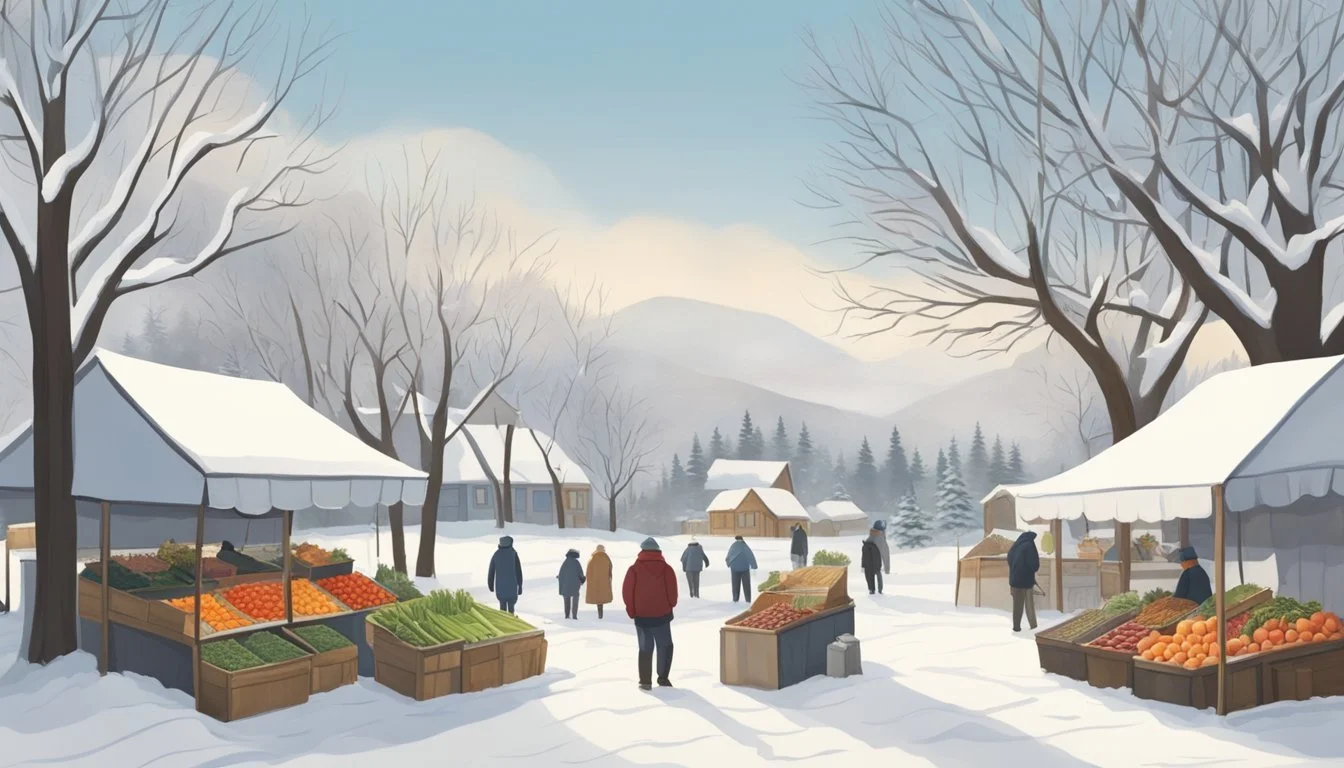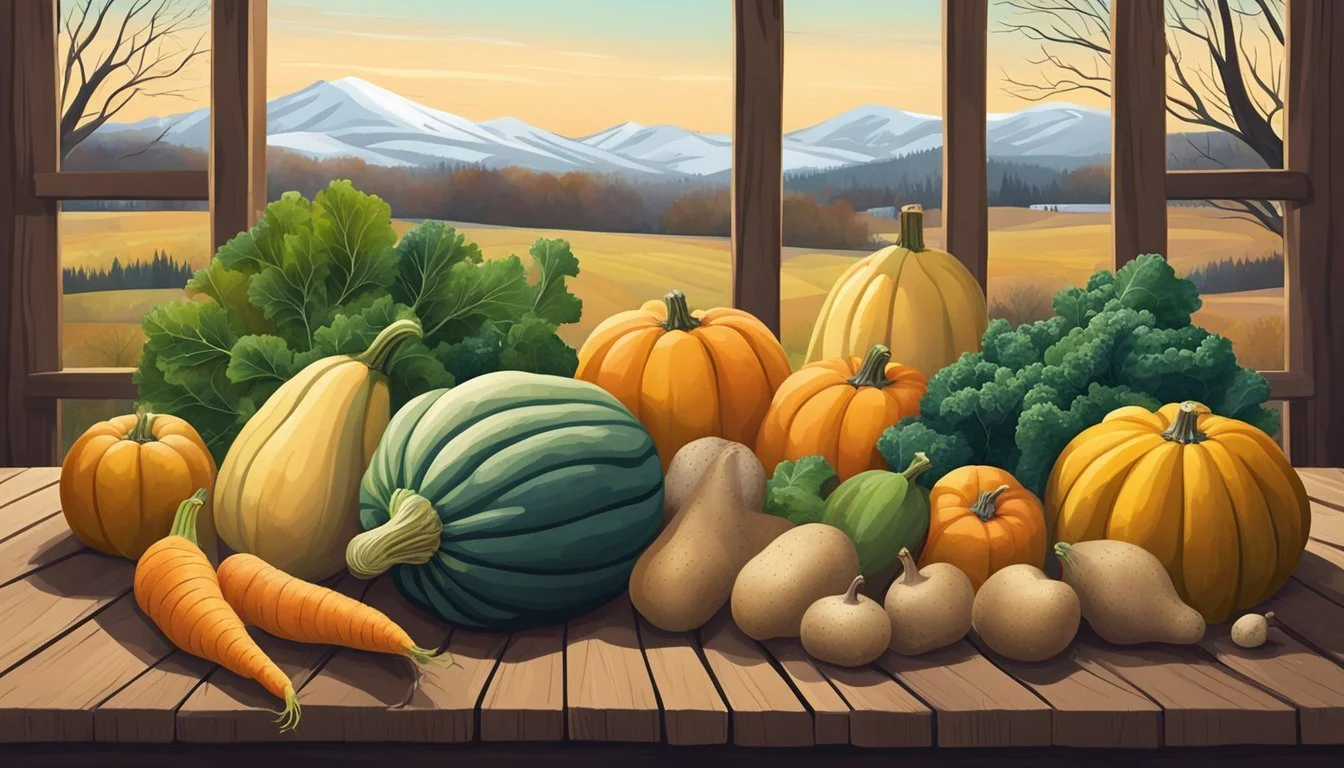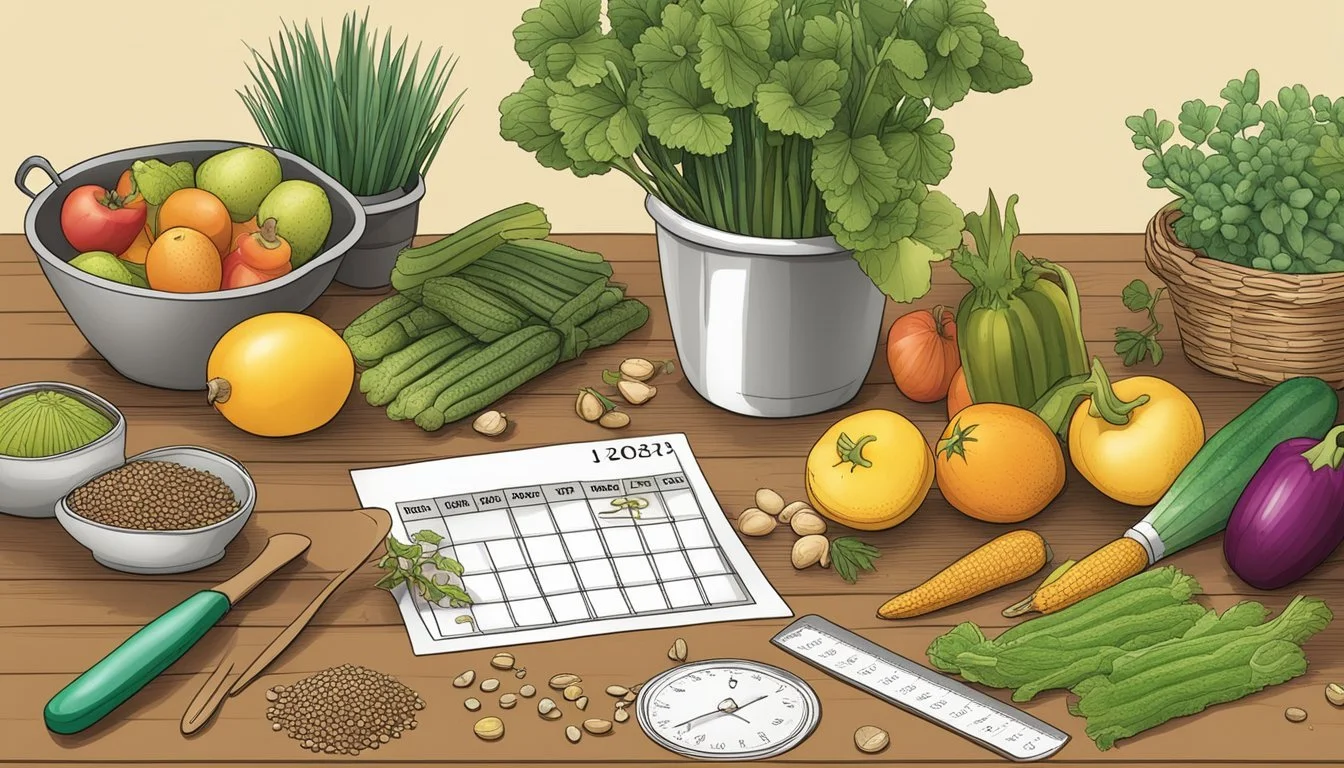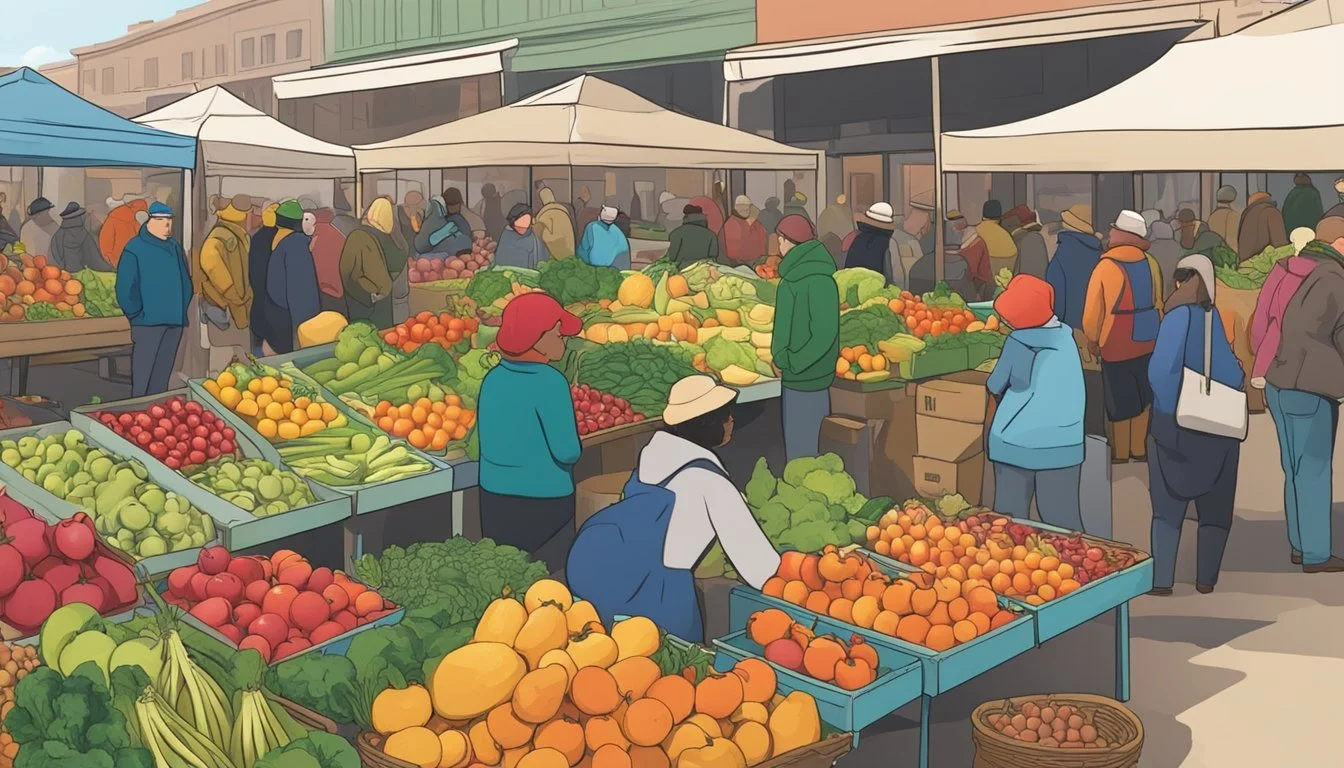Maryland Seasonal Fruit & Vegetables in January
Your Guide to Fresh Produce Shopping
This Article is Part of our Maryland Seasonal Fruit & Veg Calendar
In the midst of January's chill, Maryland offers a bounty of seasonal fruits and vegetables, providing a fresh palette of flavors for the new year. This period is characterized by hearty root crops and a selection of greens that can withstand the colder temperatures. For those looking to embrace local produce, January in Maryland presents an opportunity to enjoy a range of nutritious options sourced right from the state's farms.
Amidst the shorter days and colder weather, winter produce such as kale (What wine goes well with kale?) and other cruciferous vegetables like broccoli (how long does broccoli last?)and cauliflower take center stage in Maryland's agricultural output. These crops are not just hardy against the frost but are also packed with essential vitamins and nutrients. The robust flavors of these vegetables are ideal for comforting stews and roasted dishes (What wine goes well with roasted dishes?) that warm the body and soul.
Citrus fruits, while not native to the region, are often at their peak during this time and are commonly available in Maryland markets, adding a bright splash of color and flavor to the winter palette. They pair well with the local vegetables to create immune-boosting meals that are both satisfying and healthful. As residents delve into the colder part of the year, Maryland's January produce selection offers both variety and vitality to any meal plan.
Understanding Seasonality in Maryland
January in Maryland is deep into the winter season, a period when the state experiences a reduced variety of locally grown produce.
The Winter Season
In January, Maryland's winter grips the landscape, limiting the agricultural output to hardy cold-weather crops. Due to the chilly temperatures and frost, many crops are in dormancy. However, farmers utilize greenhouses and other methods to grow certain produce.
Typical January Harvest:
Vegetables: As the state is in the heart of winter, selections are limited. Yet, items such as kale, brussels sprouts (how long do brussels sprouts last?), and certain root vegetables like turnips can be found.
Fruits: Fruits are scarce in this season. However, stored, preserved, or greenhouse-grown fruits might still be available, although varieties are constrained.
Maryland's Regional Climate and Its Impact on Produce
Maryland's climate can drastically affect what produce is available throughout the seasons. The state's geography allows for a mix of temperate and coastal weather patterns, leading to seasonal variations in available crops.
Climatic Regions:
Western Maryland: Known for its mountainous terrain, this region experiences severe winters, resulting in a shorter growing period.
Eastern Shore and Southern Maryland: These areas have a longer growing season due to the milder coastal climate, allowing for more variety even in winter months.
The fluctuation between the cold of January and the warmest months in Maryland means farmers plan meticulously to ensure a year-round supply of produce. Despite the cold, many regional specialties that thrive in a cooler climate can still be found in Maryland's markets during the winter.
Fruits and Vegetables Available in Maryland During January
In January, Maryland offers a variety of seasonal produce that can sustain consumers through the winter months, including an assortment of root vegetables, winter squash, and hearty greens.
Root Vegetables and Hardy Greens
Maryland’s January climate sees root vegetables thriving; these include turnips, radishes, and potatoes. They are known for their ability to store well, providing a fresh and local option throughout the season. Hardy greens such as kale and spinach are also accessible, often sweetened by the frost, enhancing their flavor.
Winter Squashes and Pumpkins
Winter squash and pumpkins exhibit excellent storage capabilities, allowing them to be a staple in Maryland's January diet. These include varieties that can be kept for prolonged periods post-harvest, ensuring availability during the cold month of January.
Cruciferous Vegetables
The winter month is also suitable for cruciferous vegetables, including broccoli, cabbage, Brussels sprouts, and cauliflower. Despite the cold weather, these vegetables manage to persevere, offering Marylanders fresh produce options known for their nutritional benefits.
Planning and Preparation for the Growing Season
January in Maryland is a prime time for gardeners to strategize their planting calendar and familiarize themselves with the expected harvest periods for their chosen crops.
Crop Planning for Home Gardening
In January, Maryland gardeners should map out their gardens, deciding which vegetables and fruits they want to grow in the upcoming season. It's crucial to consider the length of the growing season, which can range from 150 to 225 frost-free days across Maryland. Given the cooler temperatures in January, this month provides a good opportunity to research and select plant varieties that will thrive in Maryland's climate zones. Gardeners may consider starting some seeds indoors, such as tomatoes or peppers, to get a head start on the season.
Crucial Planning Tasks:
Select plant varieties suited for Maryland's climate.
Order seeds from reputable catalogs or online stores.
Prepare indoor seed starting setups if necessary.
Understanding Harvest Times
Knowing when to expect harvestable produce is essential. Although January is not a peak harvest month, it's the time to understand the harvest times for different varieties of seasonal produce. For instance, early plantings of cool-season crops like lettuces and greens may be possible in late winter or early spring, with harvest expected accordingly. Familiarity with the average dates for frost and freeze events helps in planning the timing for planting and harvest, ensuring crops are sown and reaped at optimal times.
Expected Harvest Times for Key Crops:
Lettuces and Greens: Plant in late winter for an early spring harvest.
Root Vegetables: Plant as the soil becomes workable, with harvest times varying by variety.
Fruit Trees/Bushes: Understand bloom periods to protect from late frosts.
By following these guidelines, Maryland gardeners can efficiently plan their growing season to maximize their yields and enjoy a variety of fresh, homegrown fruits and vegetables when the time comes.
Buying Seasonal Produce
In January, consumers in Maryland can take advantage of locally-grown, seasonal produce that offers both freshness and nutritional value.
Local Farmers' Markets
Consumers should explore farmers' markets across Maryland for January's seasonal offerings. Markets provide a direct connection to the freshest options available. During this month, one might find a limited variety of produce due to the cold weather, but options like winter squash and root vegetables are often available. Maryland markets also supply cold-tolerant greens like kale and collards.
Available Produce in January:
Root vegetables: carrots, beets (how long do beets last?), turnips
Leafy greens: kale, collard greens
Brassicas: Brussels sprouts, cabbage
Winter squash
Apples (stored from fall harvest)
Seasonal Cooking and Eating
Cooking with seasonal ingredients from Maryland ensures peak flavor and nutrition. Recipes that include braising, roasting, and soups are suitable for January's produce, as they bring out the natural sweetness and depth of flavors in the available vegetables and fruits. Additionally, eating seasonally supports local agriculture and sustainability efforts.
Recipe Ideas with January Produce:
Roasted root vegetable medley
Sautéed kale and Brussels sprouts
Butternut squash (how long does butternut squash last?) soup
Apple crisps using stored apples
Purchasing locally and seasonally from Maryland farmers' markets in January not only brings a wealth of health benefits but also contributes to the local economy and the environment.
Preservation and Storage of Seasonal Produce
In Maryland, January's cold climate necessitates effective preservation and storage methods to extend the shelf life of seasonal produce harvested in the prior months.
Canning and Freezing Techniques
Canning and freezing are vital for preserving the freshness and flavors of fruits and vegetables that have been harvested in their peak seasons. Marylanders often can tomatoes, apples, and peaches that are abundant from summer to fall. Canning involves sealing cooked produce in sterilized jars and heat processing to destroy microorganisms. Freezing is another straightforward method that slows enzyme activity in fresh produce. Vegetables such as corn and green beans are blanched prior to freezing to preserve texture and nutritional value.
Cold Storage for Winter Vegetables
Cold storage is crucial for winter vegetables and certain root crops, which Maryland provides in abundance. It involves keeping produce like potatoes, carrots, and beets in a cool, dark, and humid environment to maintain their freshness. Specific conditions for cold storage vary:
Potatoes: 7°C–10°C, high humidity
Carrots: 0°C–4°C, high humidity
Beets: 0°C–4°C, high humidity
Containers such as wooden crates or burlap bags are often used to help maintain proper humidity levels and prevent bruising during storage. These methods ensure that January tables in Maryland can still enjoy locally grown, nutritious produce.







